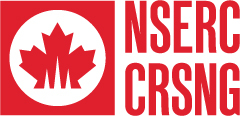Adopt a River is a citizen science-type educational program that immerses students and participating citizens in the protection of water. Through the study of multiple components of the natural environment, a diagnosis of the watercourse’s overall health state is formulated. Additionally, these observations allow the documentation of climate change’s impact on riparian ecosystems.
Since 2000, the Adopt a River program has had:
The project starts with the choice of a goal in relation to a local watercourse. Then, the study of various natural components allows the students to assess the global health state of their watercourse and meet their goal.

Site description
This step provides information on the watercourse which helps understand the link between the community and the ecosystem. It can also provide more precise context to the results found through the other components of the project.

Fish
Fishing, identification, and observation of DELT anomalies (deformation, erosion, lesion and tumour) are the key steps of this component. A predominance of fish affected by DELT anomalies indicates sediment contamination by toxic substances or punctual stress.

Water analysis
The physicochemical and bacteriological characteristics are studied to know the exact conditions of the river‘s water at the time of sampling.
- Temperature
- Turbidity
- pH
- Dissolved oxygen
- Hardness
- Coliforms
- Concentration of nitrogen
- Conductivity

Benthic macroinvertebrate
This component consists of sampling, identifying, and counting benthic macroinvertebrates. In addition to playing an important role in the food chain, these organisms are sensitive to chemical and physical changes in their habitat which is why they are excellent bioindicators of a river’s global health state!
Who is the program for?
Regional coordinators
Our regional coordinator network allows citizens of five Canadian provinces to participate in our Adopt a River program. These organizations are passionate about riparian ecosystem conservation, environmental education, and community involvement. Their role is to offer technical and scientific support to participants.
Our partner





